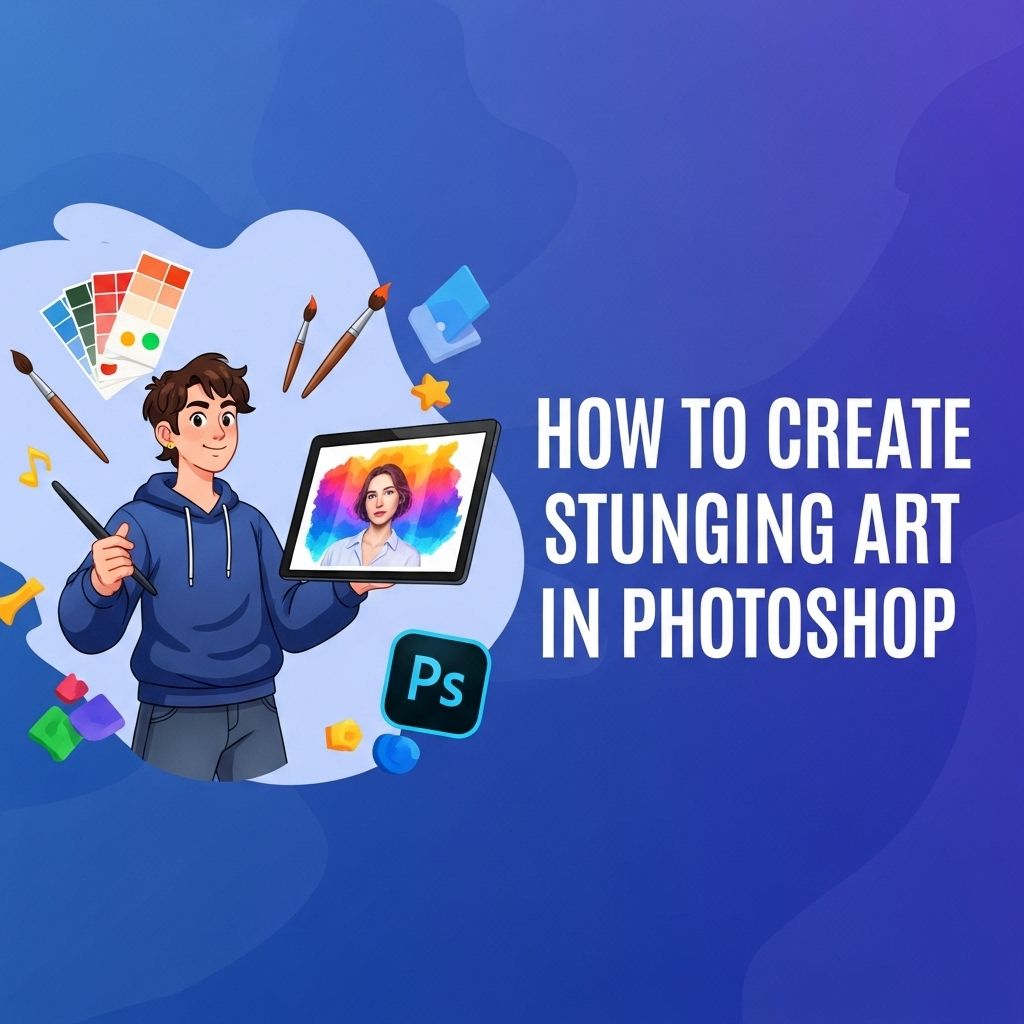Photoshop has become the go-to tool for artists and designers looking to create breathtaking visuals. With its powerful features and expansive capabilities, the software enables users to transform ideas into stunning artwork that captures the imagination. Whether you are a beginner or an advanced user, mastering Photoshop can significantly enhance your artistic skills. In this article, we will explore various techniques and tips to create remarkable art in Photoshop.
Understanding the Photoshop Interface
Before diving into the creative process, it is essential to familiarize yourself with the Photoshop interface. Here’s a breakdown of the key components:
- Menu Bar: Located at the top, it contains all the essential tools and options.
- Toolbox: Positioned on the left, this area provides quick access to various tools such as brushes, selection tools, and more.
- Options Bar: Just below the menu bar, it changes according to the selected tool, offering specific settings.
- Panels: On the right side, panels like Layers, Color, and History help manage your project efficiently.
Essential Tools for Digital Art Creation
Photoshop offers a plethora of tools that can assist in creating beautiful art. Here are some critical tools to master:
- Brush Tool: A versatile tool used to paint and blend colors.
- Pen Tool: Ideal for creating precise paths and shapes.
- Gradient Tool: Useful for adding depth and dimension to your artwork.
- Layer Styles: Effects like drop shadows and strokes can enhance the visual appeal.
- Clone Stamp Tool: Great for retouching and duplicating elements.
Basic Techniques for Creating Stunning Artwork
Now that you are familiar with the tools, let’s explore basic techniques that can elevate your artwork:
1. Layer Management
Layers are fundamental in Photoshop. They allow you to separate different elements of your artwork, making it easier to edit and manage. Consider these tips:
- Use multiple layers for different components (background, foreground, details).
- Organize layers into groups for better visibility.
- Rename layers to easily identify them later.
2. Color Theory and Application
Understanding color theory is essential for creating visually appealing artwork. Consider the following:
| Color Scheme | Description |
|---|---|
| Monochromatic | Variations of a single color. |
| Complementary | Colors opposite each other on the color wheel. |
| Analogous | Colors next to each other on the color wheel. |
| Triadic | Three evenly spaced colors on the wheel. |
Use the color picker to experiment with different hues and saturation levels.
3. Textures and Patterns
Incorporating textures and patterns can add depth to your art. Consider these methods:
- Use texture overlays to create a realistic feel.
- Experiment with patterns in backgrounds and clothing.
- Use blending modes to achieve unique effects.
Advanced Techniques for Artists
Once you have a firm grasp of the basics, you can delve into more advanced techniques that will set your artwork apart.
1. Digital Painting
Digital painting mimics traditional painting but utilizes the power of Photoshop. Here are some tips:
- Start with a sketch on a separate layer.
- Use custom brushes for different textures (e.g., hair, skin).
- Play with opacity and flow settings for more control.
2. Photo Manipulation
Photo manipulation allows you to combine multiple images seamlessly. Here are the steps:
- Select high-quality images to work with.
- Use selection tools to cut out parts of the images.
- Layer the images and adjust their positions.
- Apply adjustment layers for color correction and blending.
3. Creating Custom Brushes
Custom brushes can greatly enhance your workflow. Here’s how to create them:
- Open a new document and draw the shape of your brush.
- Go to Edit > Define Brush Preset.
- Name your brush and click OK.
- Adjust settings in the Brush panel for unique effects.
Finalizing Your Artwork
Once you have completed your digital art, it’s time for the final touches:
1. Add Details and Effects
Zoom in to add finer details and effects. Use:
- Highlights and shadows for depth.
- Textures to enhance realism.
- Filters to create artistic effects.
2. Exporting Your Artwork
Exporting is crucial for sharing your artwork. Choose the right format:
- JPEG: Good for photographs.
- PNG: Ideal for images with transparency.
- PSD: Best for retaining layers for future edits.
Conclusion
Creating stunning art in Photoshop requires practice, patience, and a willingness to experiment. By mastering the tools and techniques outlined in this article, you can develop your unique style and produce captivating artwork. Remember to take your time, enjoy the creative process, and share your creations with the world. Happy painting!
FAQ
What are the essential tools for creating art in Photoshop?
The essential tools for creating art in Photoshop include the Brush Tool, Pen Tool, Shape Tool, and the Layers panel, which allows for non-destructive editing.
How can I use layers effectively in Photoshop for art creation?
Using layers effectively involves organizing your artwork into separate layers for different elements, allowing for easy adjustments and edits without affecting the entire piece.
What techniques can I use to create realistic textures in Photoshop?
To create realistic textures, use brushes that mimic real-world materials, apply layer styles, and utilize blending modes to enhance depth and realism.
How can I enhance colors in my Photoshop artwork?
You can enhance colors in your artwork using adjustment layers like Hue/Saturation, Curves, and Color Balance to fine-tune and enhance the overall color scheme.
What are some tips for beginners in digital art using Photoshop?
Beginners should start by familiarizing themselves with the interface, practicing with basic tools, exploring tutorials, and experimenting with different styles and techniques.
How can I create a digital painting from a photo in Photoshop?
To create a digital painting from a photo, use the photo as a base layer, create a new layer for painting, and utilize brushes to paint over the image, focusing on blending colors and adding details.




